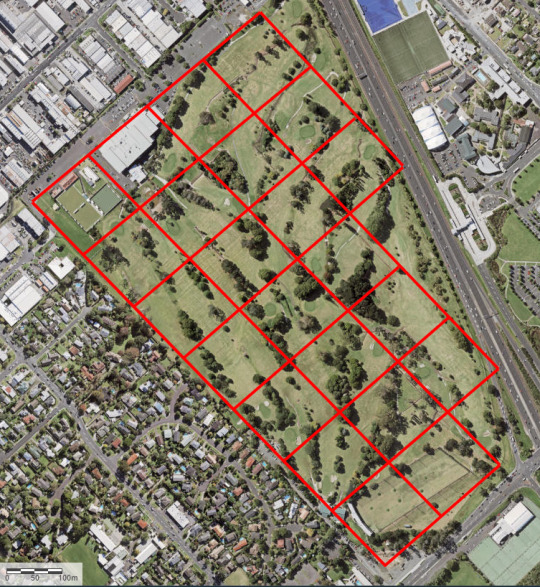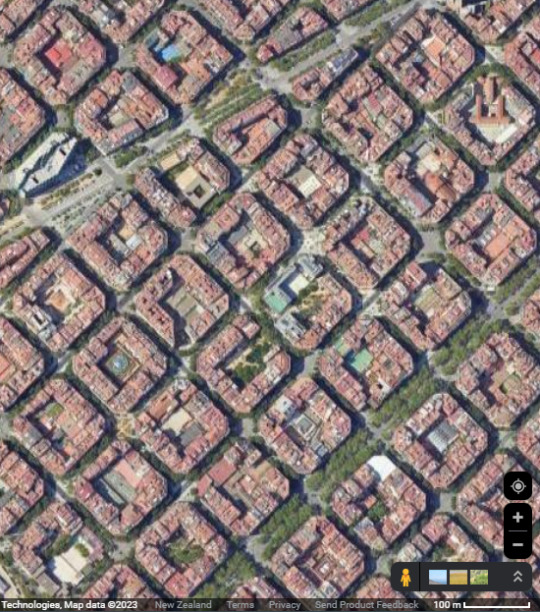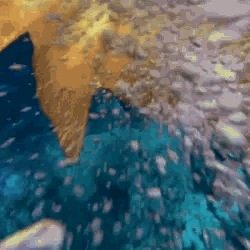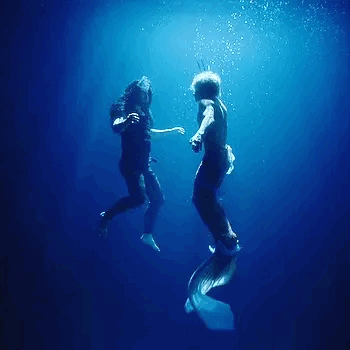#water usage
Text
Water and Pesticide Use Cut Nearly in Half After ‘Better Cotton’ Helps Farmers Become Sustainable https://www.goodnewsnetwork.org/water-and-pesticide-use-cut-nearly-in-half-better-cotton-in-india/
51 notes
·
View notes
Text
No paywall.
24 notes
·
View notes
Text


#ChatGPT#Microsoft#notmybagman#Twitter#water usage#pollution#energy usage#cooling#energy consumption#consumption#AI#artificial intelligence#the standard#environment#sustainability
7 notes
·
View notes
Link
A small country in one of the driest regions in the world is among those that have developed policies and techniques to provide water in cities and farms alike. That country is Israel. And with drought becoming the new normal, policymakers would be wise to take alook at what Israel has done, and to begin the process of creating their own water-resilient societies that are less dependent on rainfall that may never return.
Although Israel gets nearly all of its tap water from desalination plants along the coast of the Mediterranean Sea, and a large part of its water for agriculture by purifying and re-using the nation's sewage, Israel refuses to rely on any single strategy or technology in addressing its water needs.
This "all of the above" approach leads to resilience from this intentional redundancy, but it also opens the door to innovation and risk taking that has often resulted in world-changing breakthroughs.
Israel became a nation in May 1948, but decades before, while under the control of the British Mandate, the Zionist leadership began prioritizing excellence in water, along with defense and immigration policy. In most countries, the (unromantic) subjects of water infrastructure and technology are in the hands of mid-level officials and more junior cabinet members. But to read the diaries of Israel's founders is to see the daily interest, bordering on obsession, on getting water policy right. For example, long before desalination took off in Israel, the country's first Prime Minister, David Ben-Gurion, often wrote about the prospect of "desalting the sea" in order to "make the desert bloom."
10 notes
·
View notes
Text
Okay I know this is probably gross to some people, but: Just realised that the reason i dont like to change my clothes every day, and often sleep in the clothes I was wearing is out of a feeling of guilt.
I feel like its wasteful to only wear clothes for a couple of hours. Like thats what it comes down to.
Granted, part of why I feel its wasteful is mainly because of how much energy it takes me to wash them.
But I also dont feel like its necessarily unhygienic to wear the same clothes for a few days. I spend most of my day in bed. I live a very sedentary lifestyle due to my Disability. Cos of that, im not really sweating or anything along those lines. The only time i do change everyday is if i feel like my clothes get dirty (like i go outside, or i get sweaty, or i exercise in them, or I spill something on them).
Dont get me wrong: im not living in dirty clothes or squalor and filth. I make sure to change things like underwear regularly. I am very concerned with cleanliness and I often have obsessive thoughts related to hygiene. When im not changing every day its because I feel like the clothes are still almost as fresh as when i put them on, and are acceptable by hygienic standards. I change them when they're not, or I feel able to. Of course there are times when i am physically unable to change myself, and I still struggle with asking for help to do so.
I also feel like its a waste of water to wash clothes if theyre not "dirty enough" yet. I also wash only on the quickest cycle to try and minimise this.
But im also realising that it is impacting my mental health by not changing my clothes regularly, and its also not the most hygienic practice.
I dont know, I just feel a lot of guilt around anything that has to do with water usage. I always try to minimise as much as I can.
Like, i like to wash my face in lukewarm water because using cold water is often painful on my joints and makes the experience more unpleasant, so then im less likely to do so in the first place. But the water in my place takes a long time to heat up, especially in winter, and so I feel so incredibly wasteful while I'm waiting for it to do so. So then i also dont end up washing my face at all, out of a desire to not be wasteful.
I spent a couple of years living in a drought and became incredibly mindful with my water use and so I'm quite conservative in regards to it. I dont water my garden, and I wash my car like... Less than 5 times a year because of this. I just feel like its unnecessary and would be wasteful to act otherwise. But thats also translated to feelings of anxiety and guilt when it comes to using water in necessary daily activities, like self care.
I dont know. Im just feeling really stuck. I need to get into the habit of changing my clothes every day for the sake of my wellbeing, but increased laundry is physically taxing, and i feel like the water use is wasteful. Does anyone have advice?
#i also feel the same way about showering. i feel like it wastes water (even though i try to keep them as short as possible)#i also physically dont have the energy or ability to shower every day. and now the water anxiety and guilt is even worse around jt#it*#disability#water saving#water usage
1 note
·
View note
Text
Learn about responsible water use from a surprising source – a chatty water droplet named Splashy! His unique advice highlights how daily actions can impact water conservation. Recommendations underscore the importance of mindful water usage in all settings.
0 notes
Text
Statistics Stories
9/19/23
Great news. Kiplinger reports that organizations are budgeting for 4% average salary increases in 2024, down slightly from the actual average salary increase of 4.4% in 2023, and a greater increase than is projected for inflation.
The UN estimates that worldwide 1.2 million people die each year from diarrhea. Poor sanitation and hygiene cost Malawi alone $57 million in health-care costs and productivity loss. Nonprofit Evidence Action provides free chlorine water treatment via 52,000 dispensers that serve 9.8 million people in Malawi and Uganda, thus doubling the number of people with access to safe water over the past 18 monthttps://www.vox.com/future-perfect/2023/9/14/23868347/lead-poisoning-death-toll-world-bank-pure-earthhs.
In the US alone, 38 billion disposable bottles are sent to landfill every year.
The UN estimates that worldwide on average each person needs about 3,000 liters of water daily to support their basic needs every day! Of course, we in the US use far more than the global average. Some foods are surprisingly water intensive. I was surprised to learn that the 5 ounces of water I use to brew a cup of coffee is the tip of the iceberg, compared to the 140 liters of water needed to produce the coffee.
0 notes
Text
youtube
Who's really using up the water in the American West?
Hint: water scarcity in the Western US has more to do with our diets than our lawns.
Vox
1 note
·
View note
Text
By Ella Nilsen
CNN
April 11, 2023
The Biden administration on Tuesday released a highly anticipated analysis of the Colorado River crisis that paints a dire picture of what that river system’s collapse would portend for the West’s major cities, farmers and Native tribes.
In the draft analysis, the US Interior Department’s Bureau of Reclamation offers two different scenarios for how to slash water usage should the levels in Lakes Mead and Powell continue to plummet, with the immediate goal of keeping enough Colorado River flowing through the Glen Canyon and Hoover dams to supply hydroelectric power to hundreds of thousands of customers.
But the implications of the analysis go far beyond hydro power.
The Colorado River provides water and electricity to more than 40 million people in seven states: Utah, Wyoming, Colorado, New Mexico, Nevada, Arizona and California. Decades of overuse, combined with years of drought worsened by the climate crisis, have spurred a sharp drop in water levels in recent years at Lakes Mead and Powell, the nation’s largest reservoirs that power Hoover and Glen Canyon and provide water for drinking and agriculture to millions.
In both of the federal government’s scenarios, states, farms and tribes could be forced to cut nearly 2.1 million more acre-feet of their Colorado River usage in 2024, on top of existing water-conservation agreements struck in past years.
That is an enormous amount of water, roughly 684 billion gallons and nearly equivalent to what the entire state of Arizona was expected to use from the Colorado River this year.
The Interior Department is expected to make a final decision on the cuts – and how and when they would be implemented – later this summer.
Read more.
#colorado river#water usage#lake mead#lake powell#hydroelectric power#bureau of reclamation#u.s. department of interior
16 notes
·
View notes
Text
Why I hate Golf
This is the Takapuna Golf Course in Auckland, New Zealand.

It is in the middle of Auckland's north shore suburbs.
According to their website, they are one of the most popular golf courses in Aotearoa and have an annual visitor count of 60,000 people. They don't clarify if that is individual unique visitors or recounts, but lets be generous and say its unique visitors. 60,000, not bad.
This is Eden Park Stadium (the little square on the right) and oh look there's another golf course on the left there, ignore that one for now.

(the above two images are at the same scale)
Eden park has a capacity of 50,000 people. Ed Sheeran was here earlier this year and sold out the two nights he performed. That's 100,000 people in a weekend all in that little red square. 60,000 in a year no longer seems so great.
60,000 people per year is also only 160 people per day. 160 visitors to a golf course that is 470,000 square meters in area. Now the average property size in Auckland is 500 square meters. So the golf course takes up the area of 940 houses.
940 homes worth of land for 160 people.
And that is Auckland housing sizes. Auckland is horribly designed and very spread out. Let's instead look at Barcelona, considered one of the most well designed cities in the world.
This is Takapuna golf course side by side with Barcelona


(The scale is as close to being equal as I could get them, I don't have ArcGIS data for Barcelona so had to use google maps)
Each red square overlaid on Takapuna Golf Course is exactly 133m in height/width, the same size as each city block in Barcelona, road width included.
There are 23 Barcelona blocks worth of space in Takapuna Golf Course with room to spare. About 640 people live in each Barcelona block, that's 15000 people.
15000 peoples worth of homes and living spaces, sacrificed so 160 people can play golf in a day.
Now this is just one golf course in a big city, what's 15,000 people to a city of 1.6 million, who cares right?
Here is a wider shot of Auckland City.

Those red dots? They're golf courses.
There are 16 golf courses inside the metropolitan area of Auckland City (4 not pictured as Auckland is too spread out to get one clean screenshot). Keep in mind these are not rural golf courses out in the country, these are right beside housing developments and shopping malls. And for the record I could not find a single golf course in the Barcelona metropolitan area, you had to go out into the country before finding one.
So lets multiply that 15,000 people by 16 golf courses?
240,000 people.
With Auckland City's golf courses you could house 240,000 people comfortably with some good urban planning.
That is why I hate golf.
#For the record I'm not 100% against golf I just think if you have the time to play the most boring sport in the world#Then you also have time to drive 30 minutes out into the country side to play it#golf courses water usage is a whole other story but they aren't uniquely wasteful so thats why I havent mentioned that#golf courses in dry areas with water shortages are even worse than a waste of space and it doesnt matter if theyre urban or rural#but for golf courses in a place like auckland theyre water usage is generally fine and its the waste of land use that bothers me so#Auckland#New Zealand#Aotearoa#Golf#Barcelona#Why i hate golf#golf hate
135 notes
·
View notes
Text









“I know you have a little life in you yet / oh, hold my hand”
aka the ofmd ep 2x03 mermaid scene :))
requested by @fightingtrim
sources: 🌊🌊🌊 | 💙🧜♂️💙 | 🌊🌊🌊
#when I tell you. that I literally custom color adjusted almost every single gif in this board#to make everything PRECISELY fit the color palette and complete my vision#I am not exaggerating. there was a lot of ezgif.com usage. I was COMMITTED.#anyways can we talk about how pretty that center shot is bc OUGH. they…#stimboard#ofmd#our flag means death#blackbonnet#mermaids#water#nature#ocean#stim board#my boards#requests#blue#orange#gold#black#ofmd spoilers#literally obsessed with the fact that rather than do any weird cgi they just chose to flat out put Rhys Darby in a mermaid tail#what a power move tbh#you can very clearly see his legs and I don’t give a single fuck. I love it
75 notes
·
View notes
Text

here i am again
#we're living silver miracle all over again#his disaster gay bleached platinum self escaped my clutches and now his false demon king ruiner of marriages is doin it agAIN#my contracts are ripped and scattered across the ground#i don't have a high enough charm stat to pull eiden. i am in shambles#SIR AOOPPLEASE SWISH UR FEATHER BOA IN MY GENERAL DIRECTION#i don't think i've ever actually watched clueless. have i? if i did i don't remember a thing about it#and yet it remains in my mind. truly. what a cultural impact#feels like i'm tossing a lasso into a pool of eels and the eels are all eiden and they're just slipslappin out of my ineffective tool usage#lasso can't even break the surface tension of the water. what am i doing#journey to a nu world#eiden
32 notes
·
View notes
Note
I really wish that chaser had a more clearly defined definition in peoples minds as "someone who has a trans fetish" which is obviously problematic for many reasons. I want to just live my life without being labelled as a chaser for sleeping with a lot of trans women for non trans related reasons. I'm a woman who loves all women and the type of women ive slept with shouldn't define me but it is what it is :,)
I mean even "has a trans fetish" can be pretty nebulous depending on interpretation. people use the words fetish and fetishisation to mean a wide amount of things, often entirely morally inert patterns of attraction are lumped in with the "problematic". personally I think it's the patterns of behaviour and beliefs that need to be defined and criticised. take for example the classic bi dude chaser that says trans women are ~the best of both worlds~, the problem with that isn't that he likes women more than men and dick more than pussy, that's completely morally neutral. in fact, it's a good thing that there are people out there who love us in body and soul and see our bodies not as something lesser but as equal or even preferable. the problem with it is the framing and context to it that sees us as something in-between or half-and-half in a novel way, to be consumed. it's the other side of the coin of transmisogyny, the social expectation of disgust fuels desire. the serious problem comes when you date a guy like this and find he doesn't treat you like the best of any world. in fact, he doesn't want you to be a part of any of his worlds except for one. the problem is when guys (and not-guys) like this leverage their less common attraction to manipulate trans women starved of affection into damaging and degrading situations and relationships. chasers are a specific species of predator who have the advantage of their targets being conveniently socially disadvantaged and exploitable.
#transmisogyny cw#abuse cw#but like that's just the beginning of it really there's a lot you can say about chasers#I get the jokes (and make them myself) abt t4t chasers or w/e and sure it's funny#but on another level I think the watering down and ironic usage can have real dangers#trans women defined and described the chaser in order to keep each other safe#so that we are better at recognising when someone has ill intentions and can see the bait before the hook#like we still have to take it seriously
78 notes
·
View notes
Note
I simply do not understand final girl. Fandom police is pretty self explanatory. People who care to much about fiction cause they don't have a real personality. But what is final girl??
its a trope in horror movies, specifically slasher films, referring to the final woman who survives the story. thats a pretty simplified exolanation, though. it was coined in the book Men, Women, and Chainsaws: Gender in the Modern Horror Film, to describe the trend of how girls are treated in slasher movies. in addition to surviving to the end, final girls are typically also: virginal yet subjects of sexual desire, become the viewpoint character after the killer in at least the 2nd half of the movie, saved by a man OR for later iterations falsely saved by a man, and acquire a phallic weapon such as a knife to fight back. essential examples include jess in black christmas, laurie in halloween, nancy in nightmare on elm steet, and sidney in scream :)
#og post#ask#anon#over the years in fan spaces the term has become increasingly watered down and separated from its original usage#of critiquing womens treatment to instead just be like. hashtag girlboss survivor!
47 notes
·
View notes
